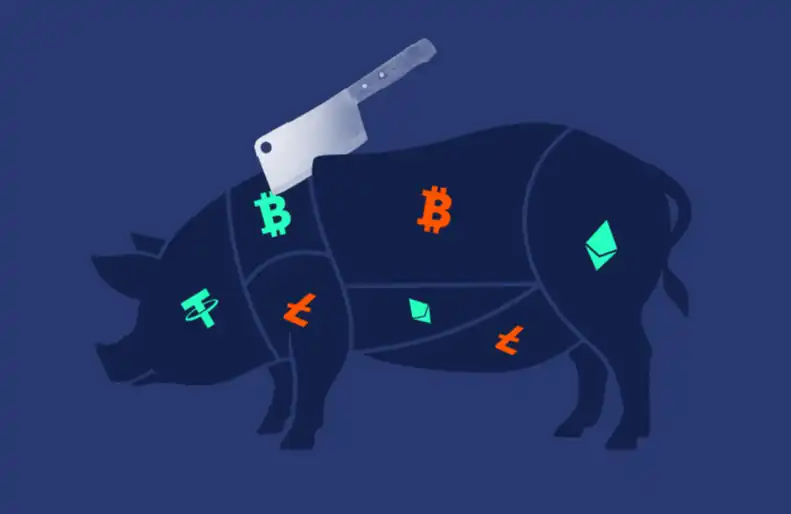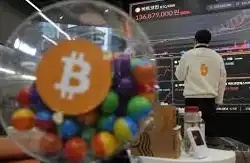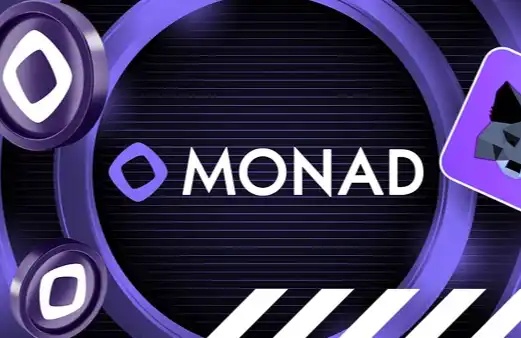Arbitrum derivatives track breakout, worth watching for four option agreements
The decentralized derivatives circuit has been the subject of constant discussion since DeFi Summer, but it never realized its potential due to Ethereum's scalability issues. Recently, Arbitrum Ecosystem, Ethereum's two-tier expansion scheme, has been getting increasingly popular with the expected popularity of Token issuance. Many DeFi derivative contracts in the ecosystem have gradually entered the field of vision of industry participants, and many new projects have emerged, including various decentralized option agreements.
Dopex

Dopex is Arbitrum Ecology's decentralized options agreement designed to maximize liquidity and yield for both buyers and sellers of options. Dopex has devised its own model of Single Staking Option Vaults (SSOV), which allows users to lock in tokens for a specified time period and sell these pledged assets as call or put options at a fixed strike price chosen at different maturity dates.
Mechanism introduction
Dopex works in a neat way. Users lock collateral into a contract vault and choose a fixed strike price at which they want to sell options. The contract deposits the collateral into various DeFi agreements for additional revenue. In this way, the user was able to sell covered options at a low risk without requiring deep knowledge of option Greeks.
By default, all Dopex options are exercised automatically at expiration and can be settled at any time after expiration. Settlement of option exercise does not require the underlying asset and is therefore a net settlement. The PnL that calculates the option is implemented by destroying the option Token and transferring the PnL in the settlement asset to the user. The specific calculation of PnL is as follows:

Dopex's SSOV model uses a multiplication-expense structure, which is a simple percentage-based multiplier that multiplicates the expense of the out-of-the-money (OTM) strike price to account for higher volatility. For example, when the asset's exercise price is $1000 and its real-time price is $500, the expense multiplier is: 1 + ((1000/500) - 1). The user's final fee is Dopex's base fee multiplied by its expense multiplier.
The Dopex protocol takes a fee from its products and distributes it to the protocol's native Token DPX lock-in holder. rDPX is also used to cover the risk losses accumulated by the option seller during periods of high volatility. This rebate mechanism for option sellers can serve as a passive income source for seller users, making it more attractive compared to the traditional options market.
Tokenomics
Dopex adopts a dual-currency model, in which DPX is the Token of governance and fee accrual of the agreement, and rDPX is the Token of rebate and incentive.
DPX limits the supply, totaling 500,000, to vote on protocol and application-level proposals, and generates fees and revenue in protocol-based liquidity pools, vaults, and wrappers after each Epoch. The distribution of DPX is: operational reserve 17%, liquidity mining 15%, platform incentive 30%, founding team 12%, early investors and Token sales 26%, of which early investors 11%, Token sales 15%.

rDPX is a compensatory Token minted for losses incurred by participants in the liquidity pool. The supply is determined on the basis of the net loss incurred by the option seller and a certain percentage determined by the governance is cast for the seller. Since the rDPX will not initially have a fixed emission curve (the emission mechanism may be changed in the future through governance votes), if the buyer has no net profit, the rDPX will become scarce.
Premia

Premia is a decentralized options market based on a point-to-pool architecture, similar to Uniswap or SushiSwap for the options market, where the user, after selecting the option they want to trade on the Premia AMM, will receive a filter quote from the options pool and purchase American options.
Mechanism introduction
Similar to normal AMMs, Premia's automatic pool pricing mechanism incentivizes liquidity providers (LP) to enter the pool from the time it is activated, ensuring that users can buy and sell options at low slip points. LP's can control the markets they underwrite, implement customized strategies, and fine-tune liquidity to the pools or designated options they want. Liquidity returns (i.e., option premium) are priced according to the supply and demand of capital in each pool and translated into LP returns.
As with Dopex, all options on Premia are fully secured and the underwriter's Token is locked into the option contract from purchase to settlement to ensure that the full exercise value of the option can always be paid to the option holder. As long as liquidity is available in Premia DEX, users can buy options on the asset. In addition, if a user purchases an option using an asset other than the default payment Token, such as ETH, Premia helps the user exchange the Token and purchase the option at the optimal price in a single transaction.

Premia's options can be exercised at any time before or after the expiration of the options. After the option expires, the value of the option is locked in as the value of the option at expiration. When the option is exercised, the exercise award is sent to the option holder and the remaining collateral is returned to the LP's liquidity pool, making it available again to underwrite future options.
Based on the Black-Scholes pricing model, Premia's option pricing algorithm combines on-chain implied volatility with supply and demand utilization correction factors, and determines prices through risk-adjusted models according to market supply and demand relations. Even in the case of unstable user behavior, pool pricing will always converge to the true market price. In the equilibrium state, the capital utilization rate in the pool is determined by the market return. Higher liquidity pool utilization means higher LP returns at no additional cost to option buyers.
Tokenomics
PREMIA is a native Token of Premia. Similar to CRV, users can obtain vxPREMIA by locking PREMIA, and enhance their "influence" by holding and locking duration. The application scenarios of influence include: enhancing liquidity mining income, stacking agreement cost allocation and increasing governance voting weight.

PREMIA's initial allocation is 30% for cross-chain liquidity mining, 20% for operations, 10% for safety/insurance, 10% for community incentives, 10% for teams, 10% for collaboration incentives, 5% for marketing advocacy, and 5% for ecological grants.

Buffer

Buffer is also an unmanaged point-to-pool option agreement in which a trader can create, purchase, and settle options on a liquidity pool without counterparty (option writer). Buffer makes options trading available to everyone and more efficient than its centralized counterparts.
Mechanism introduction
Buffer's LP provides liquidity to a liquidity pool for a specific Token and receives rBT tokens. The liquidity provided is used to underwrite call and put options, and the royalties paid by the option buyer are distributed to rBT holders as income. Option buying can set a strike price to buy a put or call option after paying the option fee, and the purchased option can be traded directly in the liquidity pool at any point before the expiration date.

As with all options agreements, users pay an exercise fee and a royalty when purchasing options at Buffer, and Buffer's settlement fee is 1% of the total amount covered by the options. The total period fee paid by the option buyer is the sum of the exercise fee, option fee and settlement fee, wherein the exercise fee and option fee are paid to LP as income, and settlement fee is distributed to the BFR holder.
Tokenomics
The Buffer protocol consists of iBFR, BFR, and rBFR tokens. iBFR can be mortgaged for BFR income or sold through agreed periodic repurchases. The BFR is a permanent uncapped revenue Token, and the BFR holder will receive all settlement fees and buy and sell mapping rewards for the agreement. RBFRS are incentive tokens for liquidity providers, and rBFR Token holders earn income by providing liquidity or pledge RBFRS for iBFR income.
BFRS have a total supply of 100 million and are currently in circulation of 28 million. Second, there is a trading incentive of 20%, liquidity incentive of 10%, as a market making and liquidity mining incentive for Uniswap v3, team allocation of 10%, Eco-cooperation of 7% to support other DEFIs to use BFRS for trading payments, and another 25% of supply will be unlocked within a six-month cliffline period.
Gains Network

Built on Gains Network, gTrade aims to create a decentralized leveraged trading platform that is liquid, efficient and user-friendly. According to official documents, gTrade's comprehensive architecture allows users to leverage up to 150 times. In addition, gTrade also includes contract trading of foreign exchange, stock market, index and other assets.
Mechanism introduction
gTrade uses a custom network of real-time Chainlink node operators to capture the median price for each trade order, which filters out any unusual price behavior occurring within a single transaction. gTrade's own trading engine is decentralized, allowing users to start trading without any registration or deposit. gTrade is unable to open, close or edit a user's open trade, except for stop-loss operations approved by the user for smart contracts. gTrade contracts can be upgraded but do not affect any open positions.
Users are given price differentials at the start of each trade to prevent bots from taking advantage of small price changes to launch price attacks. The price shock of a trade depends on the size of the position traded and the liquidity of the Token pair to prevent robots from manipulating the spot price of the platform assets. gTrade transactions are collateralized using DAI, backed by the agreed DAI Vault and gTrade Native Token GNS to maintain high liquidity. If the trade makes a profit, the agreement withdraws DAI from the vault for payment, and vice versa if the trade loses money.
The agreement charges a fund fee from the transaction and a rollover fee to manage the risk to the DAI vault. Currently, gTrade charges 0.08 percent of the position value for all tokens and 0.008 percent for foreign exchange. The fees obtained will be distributed to the team, project funds, LP and GNS pledge, etc.
Tokenomics
gTrade's Token economics revolves around its original Token GNS and its issued NFT. GNS holders already receive platform fees through single currency pledge, NFT holders receive lower slip points and higher rewards, and limit orders and clearing through NFT bots. The platform periodically destroys GNS to keep them in a net deflationary state.
There are five different levels of gTrade NFT, including bronze, silver, and gold, and holders increase their LP bonus by pledging up to three NFT. Users can also provide liquidity to the GNS/DAI pool, earning revenue while increasing the stability of the agreement. The agreement will destroy part of the GNS when the DAI Treasury becomes sufficiently over-pledged to provide a suitable cushion to the DAI Treasury pledge. More than 20 percent of the total supply of 100 million GNS, with an initial supply of 38.5 million, has been burned based on its toning mechanism.
Welcome to join the official BlockBeats community:
Telegram Subscription Group: https://t.me/theblockbeats
Telegram Discussion Group: https://t.me/BlockBeats_App
Official Twitter Account: https://twitter.com/BlockBeatsAsia


 Forum
Forum Finance
Finance
 Specials
Specials
 On-chain Eco
On-chain Eco
 Entry
Entry
 Podcasts
Podcasts
 Activities
Activities
 OPRR
OPRR









